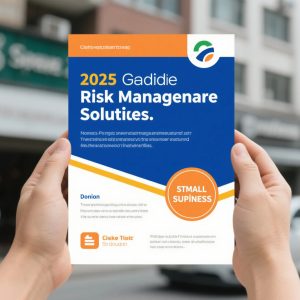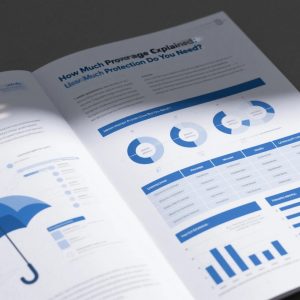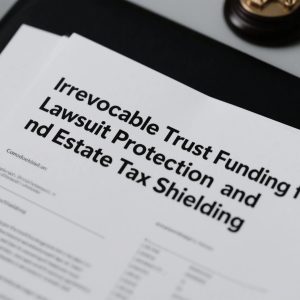The Evolving Landscape of Business Vulnerability in 2025
As we navigate an increasingly litigious business environment, forward-thinking entrepreneurs must prioritize asset protection strategies before facing legal threats. The current economic climate has seen a dramatic rise in creditor claims, partnership disputes, and tort judgments that can decimate unprotected business assets. What worked five years ago may no longer provide adequate safeguards against today’s sophisticated claimants. Modern risk management solutions require a multi-layered approach that considers both domestic and international protections.
The most vulnerable businesses often share common characteristics: rapid growth without corresponding protection updates, complex ownership structures, and significant personal guarantees. These organizations frequently discover their exposure too late – when a lawsuit has already been filed and asset transfer options have become legally precarious. Proactive planning must account for emerging threats like cryptocurrency judgments, intellectual property challenges, and cross-border enforcement actions that previous generations of business owners never faced.
Domestic Structures: The Foundation of Asset Protection
Proper entity structuring remains the cornerstone of any effective asset protection strategies. The limited liability company (LLC) continues to offer superior flexibility for most businesses when properly implemented. However, the simple act of forming an LLC isn’t enough – the devil lies in the operating agreement details and ongoing compliance requirements that maintain the corporate veil. A well-drafted LLC asset shielding strategy will include provisions for charging order protection, manager-managed structures, and capital account maintenance that collectively deter creditors.
Layering entities creates additional barriers that frustrate would-be claimants. Holding companies for intellectual property, real estate LLCs for physical assets, and operating entities for daily business activities form a defensive matrix that makes wholesale asset seizure practically impossible. These structures work best when established during periods of financial health rather than in anticipation of specific threats. Recent case law has reinforced that timing is everything – courts increasingly scrutinize asset transfers made after a claim becomes reasonably foreseeable.
Insurance Solutions for Modern Legal Threats
While entity structures provide the first line of defense, comprehensive legal risk insurance fills critical gaps in protection. Traditional liability policies often exclude precisely the risks that threaten business owners most – employment practices claims, director and officer liability, and professional services exposures. Umbrella policies specifically designed for asset protection can provide coverage where standard business policies fall short.
The most sophisticated risk management solutions incorporate hybrid insurance products that blend traditional coverage with alternative risk transfer mechanisms. These might include captive insurance arrangements for larger organizations or industry-specific risk retention groups that offer both coverage and control. The key is matching insurance solutions to the actual litigation threats faced in your specific industry and jurisdiction – a generic approach leaves dangerous vulnerabilities.
International Strategies: Beyond Domestic Borders
For business owners with significant assets, domestic protections alone may prove insufficient against determined creditors. An appropriately structured offshore trust setup can provide formidable barriers to asset seizure when designed by experienced international counsel. Jurisdictions like the Cook Islands, Nevis, and Belize offer trust laws specifically crafted to resist foreign judgments while maintaining compliance with international reporting requirements.
These international asset protection strategies work best when integrated with domestic structures rather than replacing them. A typical implementation might involve domestic LLCs owning assets which are in turn owned by an international trust – creating multiple jurisdictional hurdles for creditors. The critical factor is establishing these arrangements well before any legal threats emerge, as fraudulent transfer laws in most countries can reverse last-minute asset movements.
Retirement Accounts and Exempt Assets
Many business owners overlook the powerful protections afforded to properly structured retirement accounts. ERISA-qualified plans offer nearly ironclad asset protection in most states, while even non-ERISA plans like IRAs enjoy varying levels of statutory exemption. Integrating retirement planning with broader risk management solutions can shelter significant wealth from creditors while providing tax advantages.
State-specific exemptions for primary residences, annuities, and life insurance cash values create additional planning opportunities. The strategic conversion of non-exempt assets into exempt forms represents one of the few asset protection techniques that can be implemented even after a claim arises in many jurisdictions. However, these strategies require precise execution to avoid running afoul of fraudulent transfer statutes or creditor exemption challenges.

Digital Assets and Cryptocurrency Considerations
The decentralized nature of digital assets creates both opportunities and challenges for asset protection strategies. While cryptocurrency can be stored in ways that defy traditional seizure methods, courts are increasingly willing to impose draconian remedies on parties who refuse to surrender digital asset keys. The emerging solution lies in multi-signature wallets controlled by international offshore trust setup arrangements combined with clear documentation of access protocols.
Non-fungible tokens (NFTs) and other blockchain-based assets introduce additional complexity. These digital assets may represent ownership interests in physical assets, intellectual property rights, or membership interests in protected entities. Proper titling and documentation of these interests within a comprehensive LLC asset shielding framework can extend traditional protections into the digital realm while maintaining necessary liquidity and control.
Professional Practice Protection Strategies
Medical practitioners, attorneys, and other licensed professionals face unique asset protection challenges due to their heightened malpractice exposure and ethical restrictions on entity structuring. For these individuals, specialized legal risk insurance products must form the foundation of protection, supplemented by state-allowed entity structures like professional LLCs or limited liability partnerships.
The most effective risk management solutions for professionals often incorporate segregated asset accounts for different practice areas, retirement plan maximization, and in some cases, domestic asset protection trusts in states like Nevada or South Dakota that offer enhanced protections for licensed practitioners. These strategies must be carefully balanced against ethical rules regarding fee splitting and client notification requirements.
Family Wealth Transfers and Generational Planning
Asset protection takes on added dimensions when considering multigenerational wealth preservation. Dynasty trusts, family limited partnerships, and intentionally defective grantor trusts can all play roles in comprehensive asset protection strategies that span decades. These tools provide creditor protection for beneficiaries while maintaining family control over assets.
International dimensions become particularly important for families with global connections or assets. A well-designed offshore trust setup can protect against not only domestic creditors but also political risks, currency fluctuations, and unstable legal systems that might threaten family wealth across generations. The key lies in maintaining sufficient domestic access to trust assets while creating enough international complexity to deter creditor attacks.
Monitoring and Maintenance Requirements
Implementing asset protection structures represents only the beginning – ongoing maintenance determines their ultimate effectiveness. Annual reviews should assess changes in personal and business circumstances, evolving legal threats, and new risk management solutions that might enhance existing protections. This includes verifying that all LLC asset shielding mechanisms remain properly documented and that corporate formalities continue to be observed.
Insurance policies require regular benchmarking against current market offerings and claim trends. What constituted adequate legal risk insurance coverage five years ago may leave dangerous gaps today. Policy limits should be reviewed in light of both personal net worth growth and industry-specific jury award trends that might outpace existing coverage.
Integration with Estate Planning Objectives
The most effective asset protection plans coordinate seamlessly with estate planning goals. Techniques like spousal lifetime access trusts (SLATs) can simultaneously remove assets from creditors’ reach while optimizing estate tax exemptions. Similarly, private family foundations may offer both charitable fulfillment and creditor protection benefits when properly structured.
International components should be carefully balanced with domestic estate planning objectives. While an offshore trust setup might provide superior asset protection, it must be structured to avoid unintended U.S. tax consequences or probate complications. The ideal structure achieves protection goals without creating unnecessary complexity for heirs or compromising tax efficiency.
Implementation Timeline and Sequencing
Effective asset protection requires careful sequencing of strategies. Core LLC asset shielding structures should be established immediately upon business formation or acquisition. Insurance solutions, including legal risk insurance policies, must be reviewed and updated at least annually or whenever business operations significantly change.
More complex strategies like offshore trust setup should be implemented during periods of clear financial health, ideally as part of broader business or estate planning initiatives rather than as reactive measures. The entire asset protection strategies framework should be stress-tested periodically against realistic threat scenarios to identify potential weaknesses before they’re exploited by creditors.
Conclusion: Building a Comprehensive Defense
In today’s legal environment, asset protection cannot be an afterthought – it must be an integral component of business planning from inception through succession. The most successful entrepreneurs understand that robust risk management solutions provide not just legal protection but also business advantages through enhanced stability and predictability.
By combining domestic entity structures, appropriate insurance products, international components where warranted, and ongoing maintenance, business owners can create asset protection systems that withstand even determined creditor attacks. The peace of mind that comes from comprehensive protection allows entrepreneurs to focus on growth rather than vulnerability – the ultimate competitive advantage in an uncertain world.





